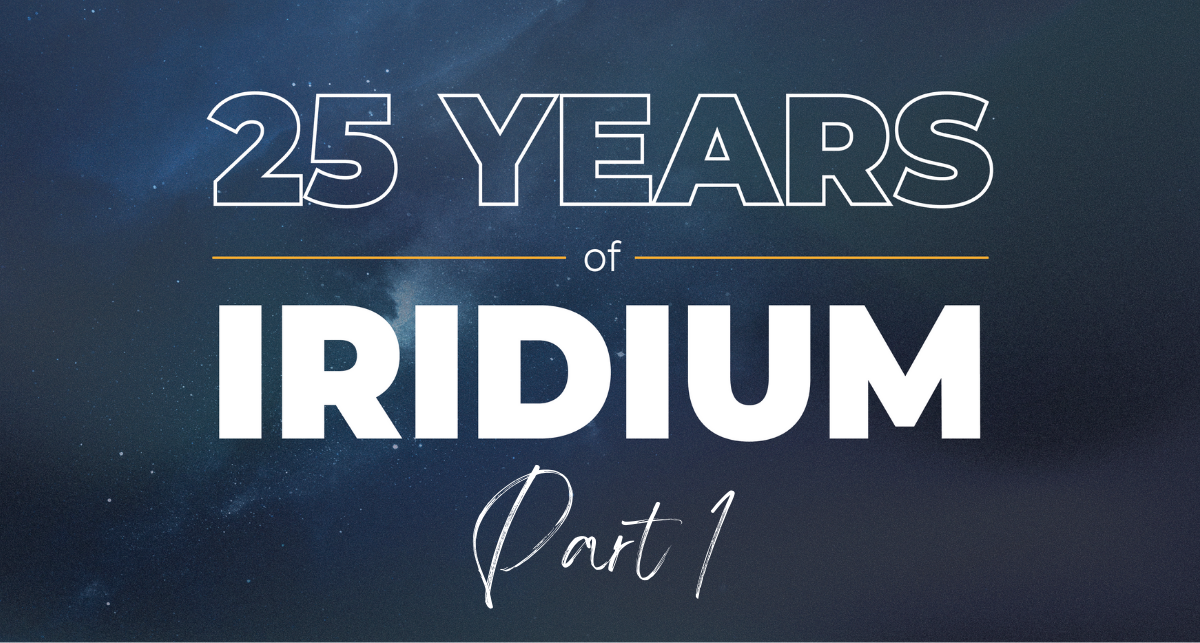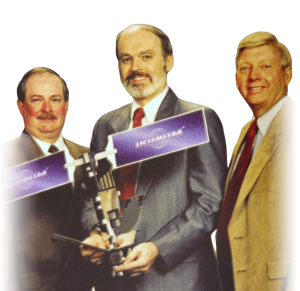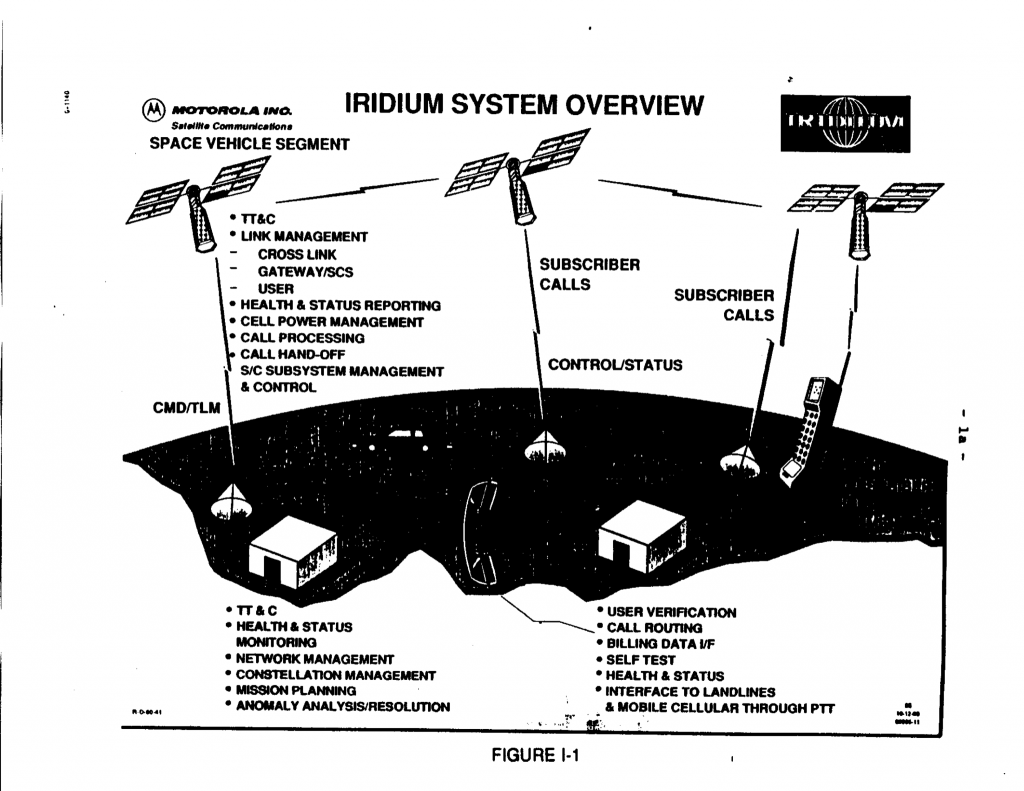Iridium Eras, Part 1: We’ve Got This Idea…

To celebrate Iridium’s 25th anniversary, we’re reflecting on the eras that made the company what it is today. From its iconic inception to infamous bankruptcy to its rise from the ashes, learn more about the world’s first and only truly global satellite network.
In 1987, a few bold thinkers envisioned a revolutionary system of communications. Bary Bertiger, Ray Leopold, and Ken Peterson met working as engineers at Motorola. Although cell phones existed, they were not yet ubiquitous, and spotty cell service was a huge issue. The group began brainstorming how to create a phone that would work everywhere in the world. As the inventor of the first handheld mobile phone, the DynaTAC, Motorola was well positioned to solve that problem. Instead of building cell towers across the entire planet, the group thought: Why not put those towers in the sky?

Motorola Strategic Electronics Division engineers Bary Bertiger, Ken Peterson, and Ray Leopold
Their proposal did not go without objections and setbacks. Many of Bertiger, Leopold, and Peterson’s colleagues did not see the importance and for a time it was a passion project they dedicated hours to outside of work. Critics raised dozens of concerns ranging from size, cost, and corporate approval to sheer feasibility. Despite this, the project captured the imaginations of those who were involved, and the naysayers motivated them even further.
Once the idea was formally approved, it expanded to a Motorola research lab in Arizona, built partially based on technology developed for U.S. President Ronald Reagan’s abandoned Strategic Defense Initiative (dubbed “Star Wars”). The group brainstormed ideas other than satellites, including fleets of planes and balloons. Upon deciding on satellites, their next dilemma was where the satellites should deploy. The architecture of the network called for a polar orbit and for the satellites to be as close to earth as possible, making Low Earth Orbit (LEO) the perfect fit.
The constellation was originally expected to need 77 satellites to provide global coverage, making Iridium—the element with an atomic number of 77—the ideal name due to the system’s design resembling electrons (the satellites) orbiting a nucleus (the Earth). Engineers later discovered only 66 satellites were necessary to cover the Earth, but the element Dysprosium didn’t have quite the same ring to it, so the name Iridium endured.

Original Iridium System Overview
Over the next decade, more than 90 satellites were built and launched. At the time, the Iridium® satellite constellation was the largest to be put into space, and the most complex engineering project in history. After 20 successful launches in 13 months, Iridium’s cross-linked, autonomous, and global network was fully operational.
Iridium announced that the world’s first global handheld satellite phone and paging system was commercially available on November 1, 1998. The inaugural call was a symbolic moment, with U.S. Vice President Al Gore dialing up Gilbert Grosvenor, Chairman of the National Geographic Society and great-grandson of Alexander Graham Bell – best known for his invention of the telephone – ringing in the next revolution of communication.
References
- Eccentric Orbits: The Iridium Story, John Bloom
- Iridium Museum
- The Iridium NEXT Constellation Story (Web series), Thales Alenia Space

